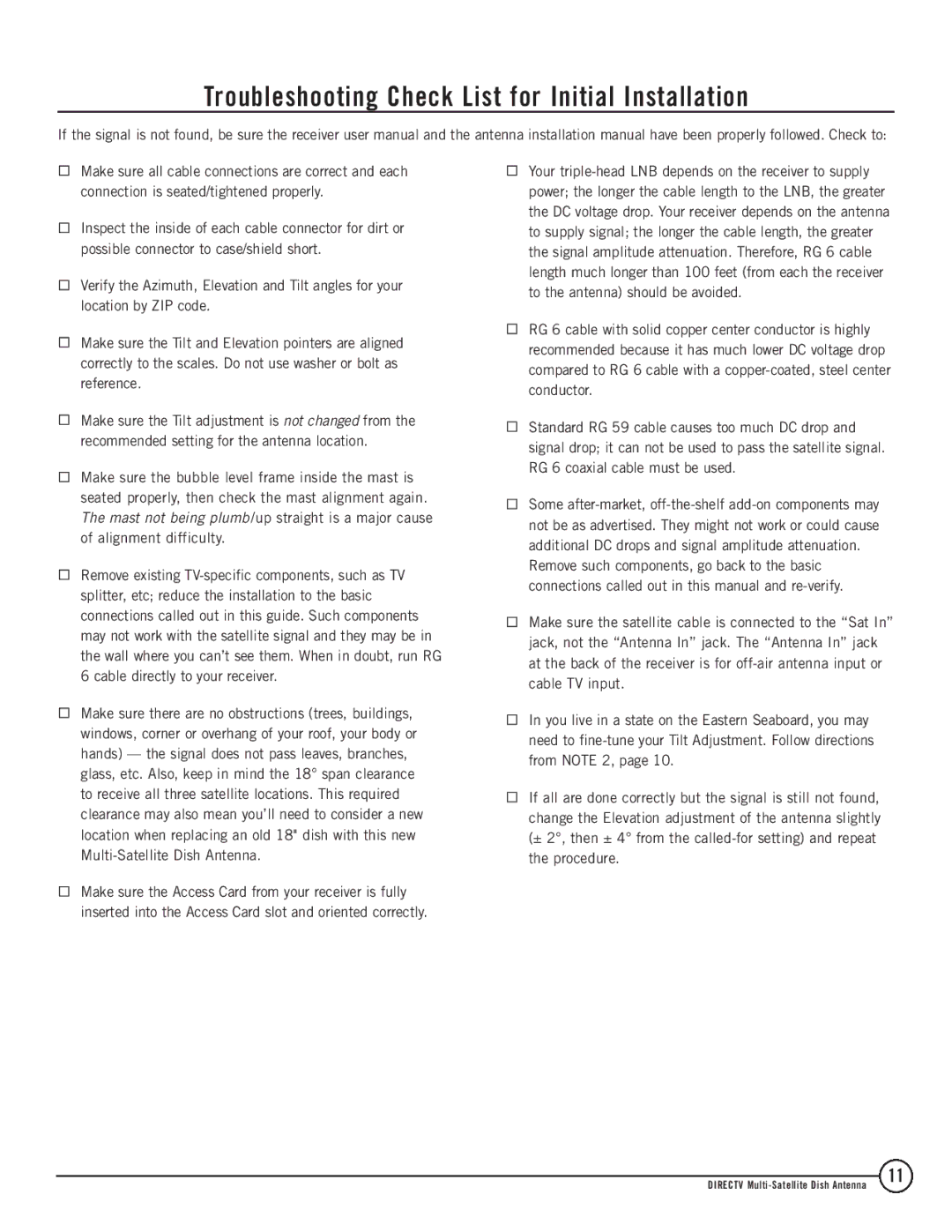
Troubleshooting Check List for Initial Installation
If the signal is not found, be sure the receiver user manual and the antenna installation manual have been properly followed. Check to:
Make sure all cable connections are correct and each connection is seated/tightened properly.
Inspect the inside of each cable connector for dirt or possible connector to case/shield short.
Verify the Azimuth, Elevation and Tilt angles for your location by ZIP code.
Make sure the Tilt and Elevation pointers are aligned correctly to the scales. Do not use washer or bolt as reference.
Make sure the Tilt adjustment is not changed from the recommended setting for the antenna location.
Make sure the bubble level frame inside the mast is seated properly, then check the mast alignment again. The mast not being plumb /up straight is a major cause of alignment difficulty.
Remove existing
Make sure there are no obstructions (trees, buildings, windows, corner or overhang of your roof, your body or hands) — the signal does not pass leaves, branches, glass, etc. Also, keep in mind the 18° span clearance to receive all three satellite locations. This required clearance may also mean you’ll need to consider a new location when replacing an old 18" dish with this new
Make sure the Access Card from your receiver is fully inserted into the Access Card slot and oriented correctly.
Your
RG 6 cable with solid copper center conductor is highly recommended because it has much lower DC voltage drop compared to RG 6 cable with a
Standard RG 59 cable causes too much DC drop and signal drop; it can not be used to pass the satellite signal. RG 6 coaxial cable must be used.
Some
Remove such components, go back to the basic connections called out in this manual and
Make sure the satellite cable is connected to the “Sat In” jack, not the “Antenna In” jack. The “Antenna In” jack at the back of the receiver is for
In you live in a state on the Eastern Seaboard, you may need to
If all are done correctly but the signal is still not found, change the Elevation adjustment of the antenna slightly (± 2°, then ± 4° from the
DIRECTV
11
